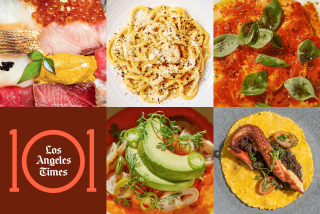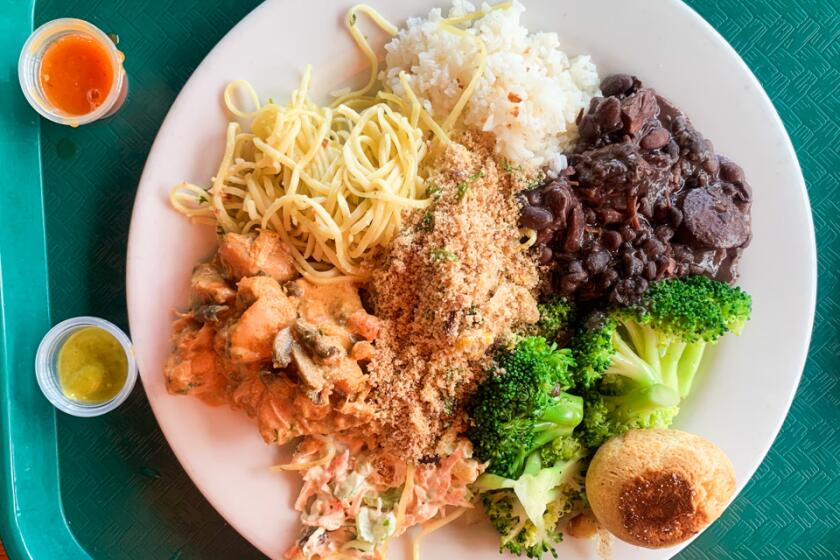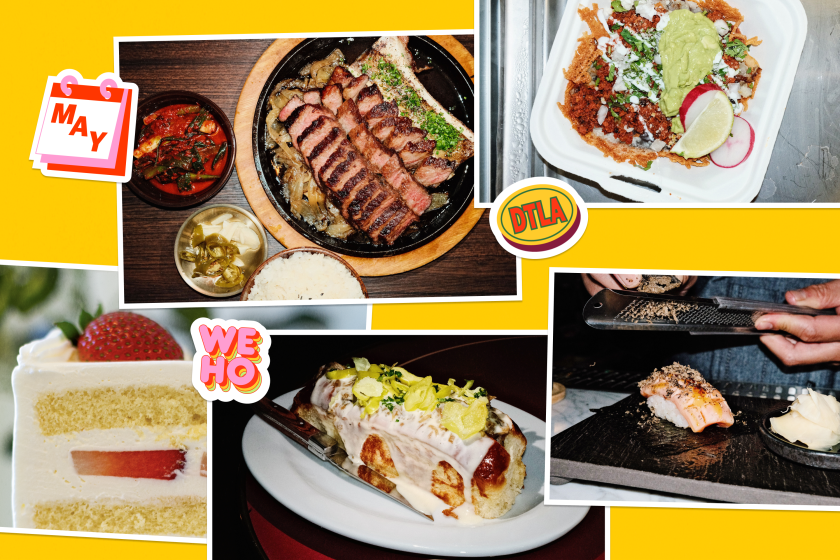Bennett: Modern Filipino food shaped by variety of cultures
It’s hard to forget your first taste of Filipino food and all the intensely distinct sweet, sour, savory, fishy and fatty flavors that can come in one meal.
For me, I was in third grade, hanging with my best friend at the time, a Filipina whose parents opened up their home after school to this latch-key kid as if I were their own (my Catholic upbringing probably helped seal the approval of our friendship).
Most days, I went home before dinner, never actually tasting the home cooking that after years had left a permeating herbaceous smell throughout her place. Then, one night I stayed, and a bowl of soup that tasted like too-tangy orange juice was plopped in front of me along with a bowl of rice.
I admit that as a kid raised on Top Ramen and Kraft macaroni and cheese, the flavors in the fishy vegetable soup were completely foreign to me. A few slurps of the pungent broth was too much for my weak palate (I probably made some horrible grimace — sorry Mary’s nanay!), so instead I ate only the long green vegetables, pulled out the chunks of fish and downed enough steamed rice to last me until morning.
Earlier this month — after years of growing into my love for other popular Filipino dishes — I was given a second chance to appreciate sinigang, the citrus-based soup that celebrates the strength of sour in a way that only Filipino cooking can.
This time I was not at Mary’s house, but at Irenia, a pop-up dinner series cum Orange County’s first modern Filipino restaurant, where chef Ryan Garlitos cooks dishes inspired by his grandmother (the restaurant’s namesake) that are indelibly influenced by the natural bounty of California and the innovations happening in Mexican and American cuisine.
Instead of the hearty dinner portion once served at a pop-up Irenia event last year, the sinigang served at its downtown Santa Ana brick-and-mortar now comes as a meatless starter, a palate cleanser of tamarind dashi, braised daikon and Chinese sitaw.
The remainder of Irenia’s menu is a similar hodgepodge of unexpected flavors and textures (fried anchovies with spicy vinegar dipping sauce, roasted catfish with bok choy and shrimp paste, Jidori chicken thighs), all testaments to the fascinating cuisine of the Philippines, which was undeniably the original Asian fusion — way before the term became a cool-hunting buzzword.
Filipino food today evolved out of centuries of indigenous traditions marrying with the dishes and ingredients brought by Chinese, Indian, Spanish and American immigrants on the island. Its herbed rice dishes have roots in Indonesia and Malaysia. Noodles for the prawn-laden pancit are a holdover from China. Beef and sausage came from the Spaniards. And the dashi method that Garlitos uses to prepare the sinigang broth (along with an alternative miso-based version of the soup) was introduced by Japanese farm workers in the early 1900s.
Like other new-wave modern Filipino concepts in nearby Los Angeles (see: LASA, Rice Bar, Belly & Snout), Irenia is a place where citrus and spice go hand in hand, where the battle between sweet and salty reflect the dualities present in everyday life, where fish and pork can be both front and center and also lurking subtly in the background, and where — perhaps not surprisingly given Spain’s 300-year rule over the Philippines — the food often feels like you’re in an alternate-universe Mexican restaurant.
A recent dinner special at Irenia included ginataang corn, aka ginataang mais (corn in Spanish is maiz), which the waiter even described as “Filipino elotes.” Cooked in coconut milk, the dish is usually watery and eaten as a dessert, but Garlitos (who cut his teeth in the kitchen at Costa Mesa’s modern Mexican marvel Taco Maria) drained the coconut milk out, tossed the whole kernels with fresh mussels and placed the whole sweet-briny pile atop a silky vinegar-corn puree. Each dig felt like an excavation, each bite a different experience.
In the hands of Garlitos, a classic pork adobo — which might as well be the national dish of the Philippines — becomes more like a mole, fatty pork belly tossed in a thick and rich dark gravy made from combining the meat’s jus with spices and herbs. Even the rice bowl portion of adobo served during Irenia’s lunch hours is filled with the kind of saucy depth only achieved by keeping a portion of the mixture from the day before and feeding it with fresh additions as needed, like a sourdough bread’s mother dough (or the mole madre at Enrique Olvera’s Pujol).
For dessert, pastry chef Ashley Guzman makes a rotating menu of affordable sweets like lumpias matamis, calamansi merengue tarts and maiz con hielo that could easily go toe-to-toe with anything you’re currently being overcharged for at a fine-dining American restaurant.
Across all its seasonal menu changes, nightly specials, expertly made rum cocktails and comforting desserts, Irenia’s Latino tinges are so organic and make so much sense, it’s amazing that a Filipino restaurant hadn’t opened in Santa Ana sooner.
They might not be serving exact replicas of the food my friend Mary grew up eating, or the recipe-driven dishes Garlitos’ own grandmother used to cook, but like Filipino cuisine itself, it’s a natural evolution, folding one chef’s Orange County experience into an already fusion tradition.
And whether your first experience with Filipino food is at a friend’s house or at Irenia itself, it’s sure to be one meal that’s hard to forget.
--
SARAH BENNETT is a freelance journalist covering food, drink, music, culture and more. She is the former food editor at L.A. Weekly and a founding editor of Beer Paper L.A. Follow her on Twitter @thesarahbennett.
More to Read
Eat your way across L.A.
Get our weekly Tasting Notes newsletter for reviews, news and more.
You may occasionally receive promotional content from the Los Angeles Times.






